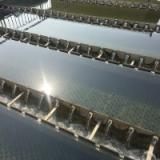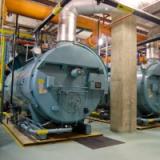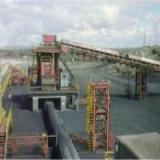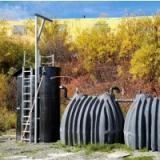Mining & Mineral Processing Solutions
Maximize mining yield and achieve environmental compliance by preventing water-based and air-borne contaminants from affecting your process and the surrounding environment.
Veolia is helping mines and mineral processors control dust emissions, treat site effluent to meet the strictest regulations, and improve yield and runtime by protecting process assets from fouling and corrosion.
What is mining wastewater?
Mining wastewater treatment is a vital process focused on purifying water contaminated during mining activities, addressing issues related to the presence of pollutants like heavy metals and chemicals. Employing various technologies, such as sedimentation, filtration, and chemical treatments, mining wastewater treatment aims to meet stringent environmental standards. By effectively treating mining wastewater, this process plays a pivotal role in safeguarding water quality and promoting sustainable mining practices, mitigating the environmental impact of mining activities on water resources.
What are the benefits of mining wastewater?
- Environmental Conservation:
- Mine water treatment minimizes the environmental impact of mining activities by removing contaminants and ensuring responsible water discharge.
- Resource Conservation:
- Recycling mining water through advanced treatment processes conserves valuable water resources, promoting sustainable and efficient water use.
- Economic Efficiency:
- Implementing mine water treatment and recycling practices can lead to cost savings by reducing the need for fresh water intake and minimizing disposal expenses.
- Compliance with Regulations:
- Adopting effective mine water treatment ensures compliance with environmental regulations, preventing contamination of surrounding ecosystems and safeguarding against legal and reputational risks.
- Community Well-being:
- Responsible mining water management contributes to the well-being of local communities by preventing water pollution and preserving the quality of water sources for various uses.
- Long-term Sustainability:
- Mining water recycling supports the long-term sustainability of mining operations, fostering a balance between resource extraction and environmental stewardship.
- Reduced Ecological Footprint:
- By treating and recycling mining water, operations can minimize their ecological footprint, demonstrating a commitment to environmental responsibility.
- Operational Resilience:
- Incorporating mine water treatment and recycling practices enhances the resilience of mining operations by ensuring a reliable and sustainable water supply for various processes.
Overview
Products
Boiler Water Chemicals
Driving efficiency, safety and reliability in your steam-generating systemCooling Water Treatment Chemicals
Extend asset life with Veolia's broad portfolio of cooling water treatmentsDust Control Programs
Minimize dust and reduce health and safety hazardsInSight*: Asset Performance Management
Get connected. Get InSight. Get optimized.Membrane Chemicals & Pretreatment Products
Protect your RO membranes from scale, bacterial growth and foulingWastewater Treatment Chemicals
Creating sustainable solutions for wastewater treatmentWater & Wastewater Service Programs
Improve your operations with Veolia expertise and service offeringsApplications
Boiler Water Treatment
Prolong the life of your physical assets and maximize process productivity by optimizing…Cooling Tower Water Treatment
Corrosion, deposition, fouling, and biological growth can derail your operations. Veolia…Industrial Dust Control & Suppression
Dust control is a major challenge for mineral and power industries. Dust control in…Heavy Metals Removal
Regulations for heavy metal effluent limits are becoming stricter as the industry…Industrial & Municipal Wastewater Treatment
Whether municipal or industrial, Veolia understands your challenges and recognizes the…Lithium Processing
Whether it’s installing solar panels at several of our facilities or finding creative…Zero Liquid Discharge (ZLD) Wastewater Treatment
Robust industrial treatment minimizes wastewater discharge and maximizes water recovery…Case Studies

Veolia provides nickle mill with process optimizations to increase capacity
Veolia's tailings treatment program improved solids removal ad allowed higher processing rates.

Iron mine boiler treatment provides savings by minimizing deposition & repair costs
Novel boiler water treatment prevents scaling from contaminated make-up, improving reliability and efficiency.

Lady Annie Mine controls dust with DusTreat* program
With a brand new road train road laid, the Ladu Annie Mine needed to find a practical solution to controlling dust.

Simple membrane bioreactors with ZeeWeed* 500S for remote locations
ZeeWeed 500S enables the treatment of domestic sewage from a remote mineral exploration camp in Alaska.
Are there any risks associated with mining wastewater?
- Pollutant Contamination: Mining wastewater may contain high levels of pollutants, including heavy metals, chemicals, and suspended solids, posing risks to aquatic ecosystems and human health.
- Acid Mine Drainage (AMD): Mining activities can lead to AMD, a significant risk where water becomes acidic due to exposure to sulfide minerals, further impacting surrounding water bodies.
- Erosion and Sedimentation: Discharge from mining activities can contribute to soil erosion and sedimentation in water bodies, affecting water quality and aquatic habitats.
- Ecological Impact: Uncontrolled release of mining wastewater can harm aquatic life, disrupt ecosystems, and lead to long-term environmental damage.
- Human Health Concerns: Contaminated water may pose risks to local communities if used for drinking or agricultural purposes, highlighting the importance of proper mining water treatment.
- Mining Influenced Water (MIW): MIW is a term used to describe water impacted by mining activities. It emphasizes the need for specialized water treatment processes tailored to address the unique challenges posed by mining-related contaminants.
- Importance of Water Treatment Plants: Water treatment for mining, conducted through specialized plants, plays a crucial role in mitigating these risks. These plants employ various technologies to remove pollutants, neutralize acidity, and ensure the safe discharge of water into the environment. Properly managed water treatment is essential for minimizing the environmental impact of mining activities and safeguarding both ecosystems and human health.
How do you treat mining wastewater?
Mining wastewater treatment is a crucial process aimed at mitigating environmental impact and ensuring the responsible management of water resources. Several methods are employed in the treatment of mining wastewater, each tailored to address specific contaminants associated with mining activities.
1. Sedimentation and Filtration: Sedimentation allows suspended particles to settle, while filtration involves using physical barriers to capture finer particles, effectively removing solid contaminants from the wastewater.
2. Chemical Precipitation: Chemical precipitation introduces substances that react with contaminants, causing them to form solid particles. These particles can then be easily separated from the water, making this method effective for treating mining wastewater containing heavy metals.
3. Biological Treatment: Biological treatment harnesses the power of microorganisms to break down organic pollutants present in mining wastewater. This eco-friendly method enhances the natural degradation of contaminants.
4. Activated Carbon Adsorption: Activated carbon is utilized to adsorb organic compounds and certain inorganic contaminants. The high surface area of activated carbon allows for the effective trapping and removal of pollutants from the mining wastewater.
5. Reverse Osmosis: Reverse osmosis, a membrane-based technique, employs pressure to force water through a semi-permeable membrane. This process effectively removes dissolved ions, particles, and contaminants, making it particularly suitable for treating mining wastewater with high salinity.
6. Ion Exchange: Ion exchange involves swapping ions in the wastewater with ions on a resin, resulting in the removal of specific contaminants, especially heavy metals. This method is valuable for treating mining wastewater with elevated concentrations of metal ions.
A combination of these methods in a tailored water treatment for mining approach ensures the effective removal of diverse contaminants, meeting environmental standards and promoting sustainable mining practices.
Unlock environmentally responsible mining with Veolia's cutting-edge solutions. Contact your local Veolia representative to explore our expertise in advanced mining water treatment for sustainable resource management.
